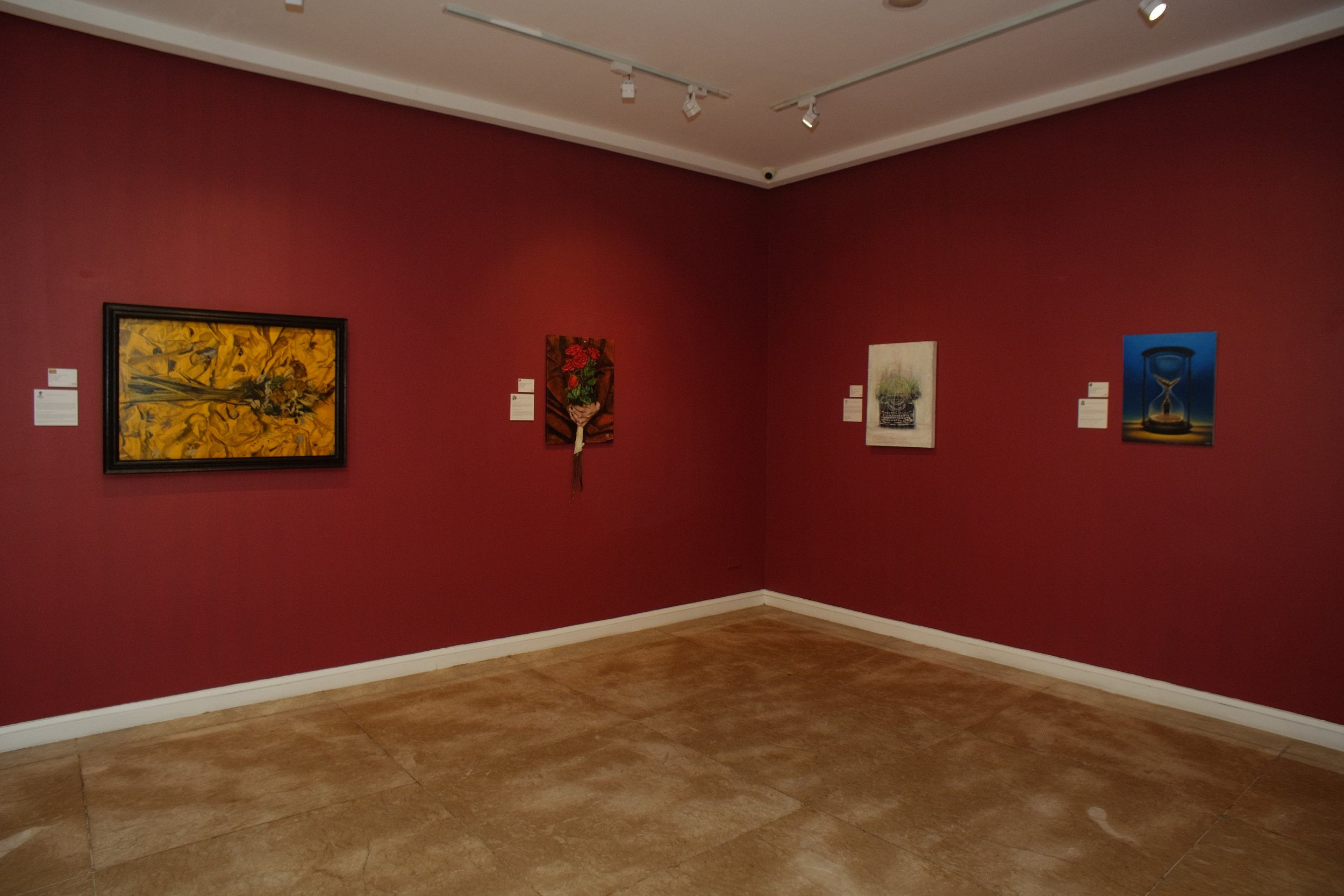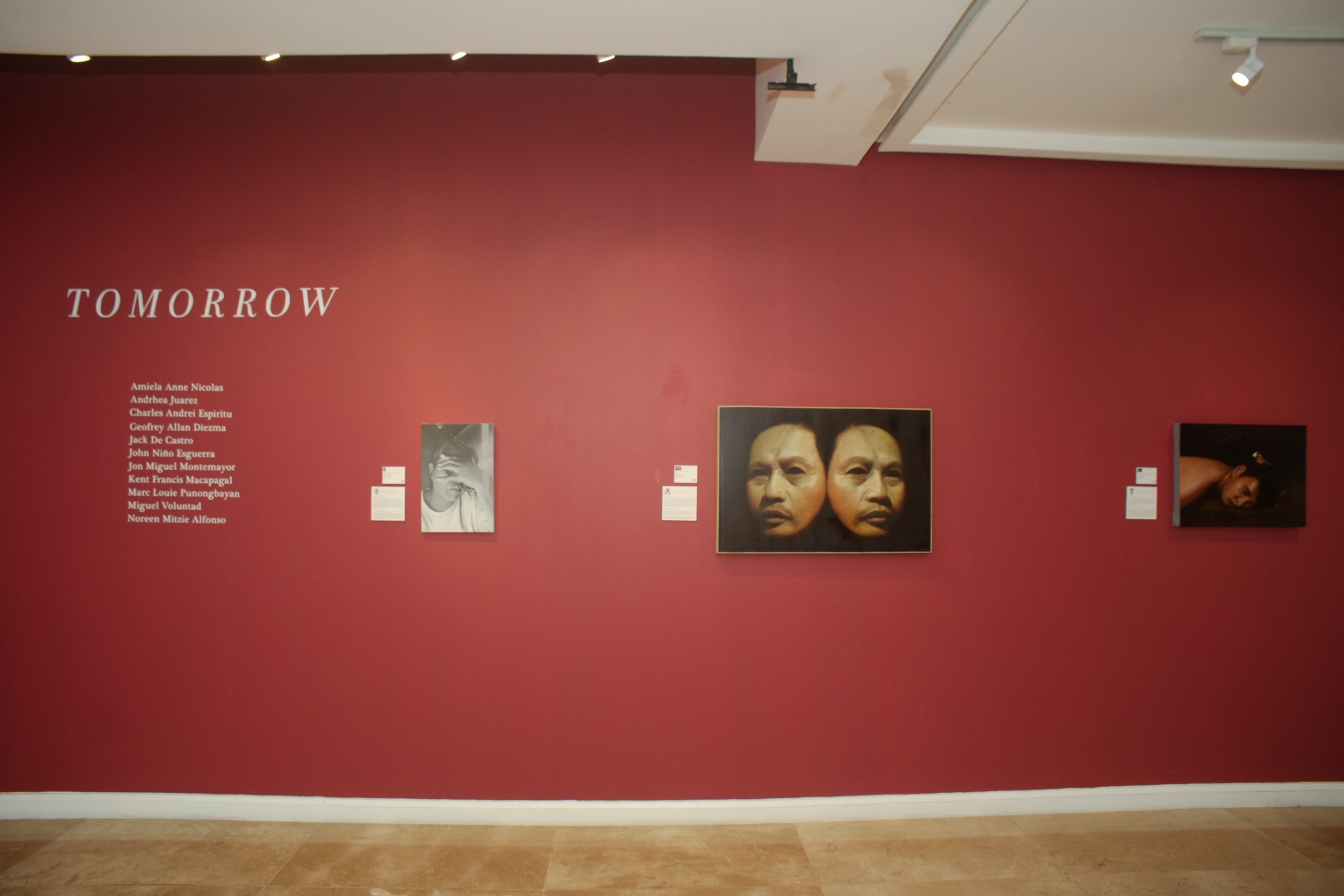Fundacion Sansó forges a promising tomorrow through education
The institution honors the journey of its scholar-graduates with the exhibition “Tomorrow”.
Written by Chesca Santiago
September 5, 2023
In the country’s expanding landscape of arts and cultural institutions, there are a few that stand out for their steadfast commitment to the community. Over the years, not-for-profit institution Fundacion Sansó has consistently led the list—its robust initiatives for students, artists, and society dedicated to forging a promising tomorrow for the creative community.
Last August 19, Fundacion Sansó celebrated a milestone in this vision with the launch of the exhibition Tomorrow. The exhibition stands as the graduation show for eleven recipients, all from Bulacan State University (BulSU) College of Architecture and Fine Arts, of the Fundacion Sansó Fine Arts Student Stipend. Tomorrow’s objectives are twofold: to celebrate each scholar’s journey and to launch their professional career in the arts.
In view: The eleven graduates of the Fundacion Sansó Fine Arts Student Stipend from BulSU with Fundacion Sansó staff. (Image Credit: Chesca Santiago).
A holistic support to emerging artists
Fundacion Sansó officially launched the scholarship program in 2018 and is currently the only private institution that independently bestows grants. Aside from its BulSU scholars, the program also provides support to Fine Arts students from Far Eastern University and the University of the Philippines. The initiative is part of the institution’s various advocacies, scholarships, and student stipend funds that realize Juvenal Sansó’s vision to assist artists and other emerging creatives in the industry.
“It was really to follow through with the vision of Juvenal Sansó to help budding artists. Nahirapan siya to be an artist when he was in Paris kasi may restrictions sa pera—kasi after the war ‘yun eh. He had to live on $100 a month: umuupa, kumakain, nag-aaral. So paying forward to other artists, tumutulong siya privately. Pero kami, ginawa na namin siyang program,” Fundacion Sansó Director Ricky Francisco explains of the initiative’s aims.
In view: Works by the scholar-graduates for the exhibition Tomorrow. (Image Credit: Miguel Villaor of Fundacion Sansó).
Throughout the scholarship period, Fundacion Sansó’s assistance proved necessary in various respects of the students’ practice. From helping the students purchase materials for their university and thesis requirements, to contributing funds for their own exhibits, the scholarship program became instrumental in carrying out the scholars’ creative journey.
Eventually, the program’s support would reach outside the scholars’ financial needs. “Fine Arts is a very expensive course—maraming materials and tools needed, so a stipend is very useful. Second, sa mental part. As a scholar, malaking tulong po yung boost of confidence kasi you are a scholar of a big Foundation. It pushes you to strive for more and marami ka pang opportunities na gustong hanapin,” says scholar Jon Miguel Montemayor, who finished with a Fine Arts major in Visual Communication degree.
In view: Exhibition shot of Fundacion Sansó’s latest show. (Image Credit: Miguel Villaor of Fundacion Sansó).
Thus, as competitive as the contemporary art scene has become, the needs of an emerging artist extend beyond the financial—something that both Fundacion Sansó and the scholars have recognized. Francisco shares that art galleries tend to pay more attention to established artists. Investing in emerging artists, from the perspective of art galleries, appear to be an economic gamble that might lead to risks and losses.
Hence, Francisco further adds that through the exhibition, “What we’re trying to do is to give these artists an edge. Giving them this exhibition, allowing them to have access to artists who are practicing already. Para more or less they know what to do or have an idea how to become a professional artist.”
Jack De Castro, also a scholar who graduated with a Fine Arts degree, echoes Francisco’s sentiment. “[Sa tulong ng scholarship program, natutunan ko kung] paano tumatakbo yung sistema. Kung paano maging artist. Kung paano ihahandle yung deadlines bilang student at artist na nagsho-show sa mga gallery,” he adds.
Extending Juvenal Sansó’s legacy to the community
Alongside the opening reception for Tomorrow, August 19 also marked the launch of Cara y Cara: a crossover exhibition featuring works by Bidibidi and Inday Cadapan. Both artists are the first participants in two community-oriented initiatives by Fundacion Sansó—Bidibidi for ADE (Art+Design=Empowerment) and Cadapan, represented by her family, for I CArE (Initiative for the Continuance of Artists’ Estates).
With both their love of depicting the female face in their art, works by Bidibidi and Inday Cadapan are featured alongside each other at Cara y Cara. (Image Credit: Miguel Villaor of Fundacion Sansó).
Established in 2021, ADE takes inspiration from the applied arts works of Juvenal Sansó, whose textile designs sustained his practice. Through the program, Fundacion Sansó collaborates with artists whose practices reflect a strong social orientation, in turn employing their creative skills to empower their chosen communities. A portion of the proceeds from both art and product sales go to the beneficiary group supported by the guest artist. Aside from Bidibidi, the institution has so far partnered with Robert Alejandro and Melissa Yeung Yap.
As a cultural center dedicated to developing the art sector of the country, Fundacion Sansó also launched I CArE. The program helps artist estates, including that of Abdulmari Imao and Inday Cadapan, preserve their legacy through merchandising, skill transfer, and copyright resources.
Altogether, these initiatives demonstrate Fundacion Sansó’s efforts to expand the legacy of Filipino-Spanish painter and Presidential Medal Merit of Awardee Juvenal Sansó beyond the Museum and into the country’s wider arts and culture community.




